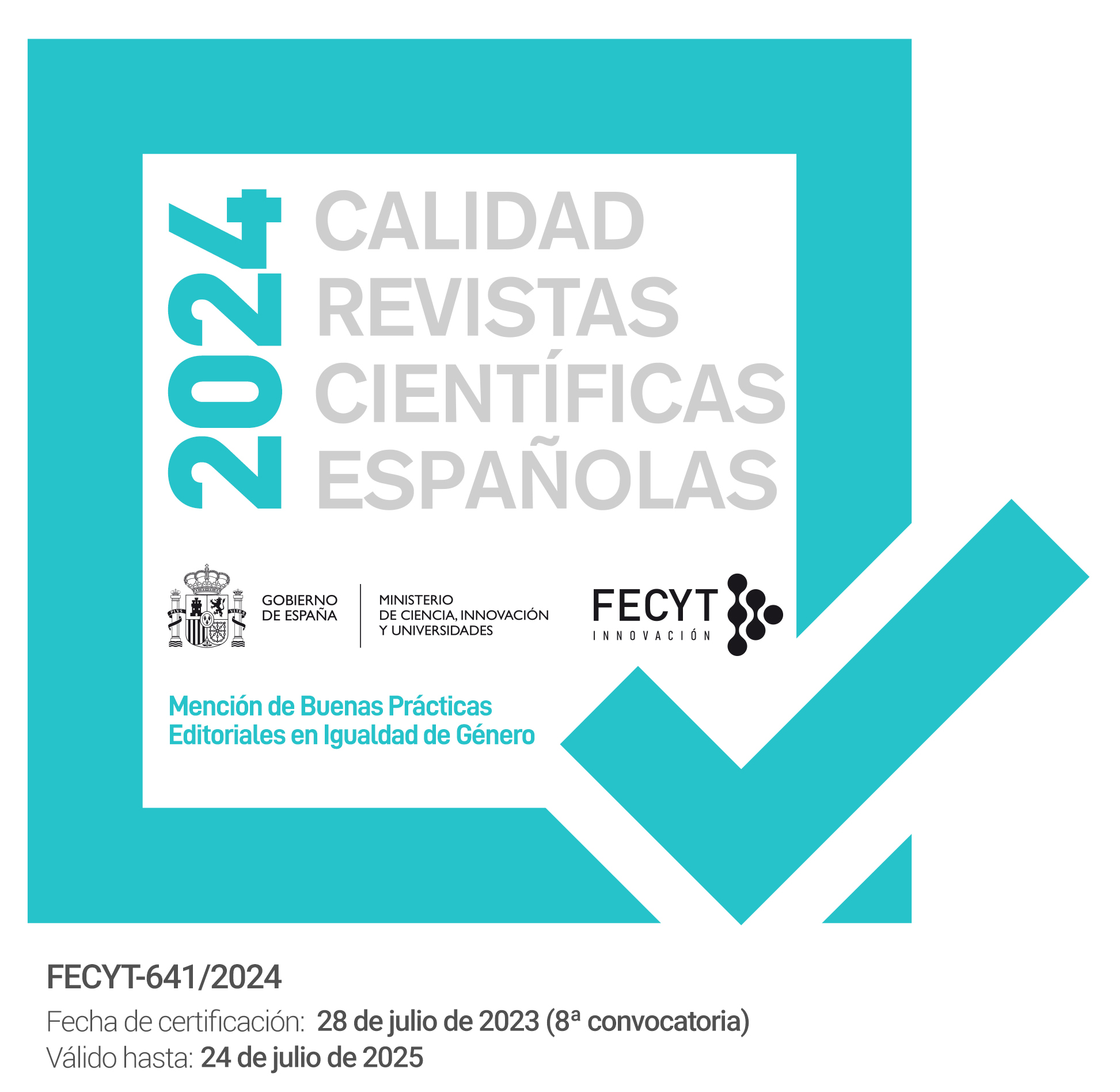The Narrative by Manuel Fernández y González Facing the Literary Canon
DOI:
https://doi.org/10.12795/PH.2024.v38.i02.08Keywords:
Harold Bloom, Villafranca cycle, horizon of expectations, theory of genius, RomanticismAbstract
Harold Bloom’s literary canon generalizes in Bécquer, Galdós and Clarín the literary production in the Spanish language during the 19th century, which suggests an inexplicable gap in the novelists in that language from the Golden Age to literary realism, and more specifically in the era of Romanticism. The present work proposes to fill that gap by establishing the novelist Manuel Fernández y González as one the main novelists in Spanish prior to realist literature. To do this, and in view of how unsystematic the theory proposed by Bloom is, the concept of Jauss’s horizon of expectations has been used, added to González Maestro’s theory of genius, to give objective reasons that justify the canonical consideration of the writer proposed, and more specifically his most ambitious work, the Villafranca cycle.
Downloads
References
Álvarez de Miranda, P. (2004). Sobre el “quijotismo” dieciochesco y las imitaciones reaccionarias del “Quijote” en el primer siglo XIX. Dieciocho: Hispanic Enlightenment, 27(1), 31-46.
Arellano, I. (2002). Amores y Estocadas, de Manuel Fernández y González, o la novela histórica grotesca. En M. Fernández y González (Ed.), Amores y estocadas. Vida turbulenta de don Francisco de Quevedo (1.ª ed., pp. 5-11). El folletín de la Perinola.
Bloom, H. (1997). The Anxiety of Influence. A Theory of Poetry (2.ª ed.). Oxford University Press.
Bloom, H. (2002). El canon occidental (3.ª ed. en español). Anagrama.
Bloom, H. (2005). Novelists and Novels (1.ª ed.). Chelsea House Publishers.
Bloom, H. (2011). Anatomía de la influencia. La literatura como modo de vida (1.ª ed. en México). Taurus.
Fernández y González, M. (1850). El laurel de los siete siglos (Crónica del siglo XV) (Conquista de Granada) Leyenda oriental (1.ª ed.). Imprenta y librería de José M. Zamora.
Fernández y González, M. (1853). Men Rodríguez de Sanabria (Memorias del tiempo del rey don Pedro el Cruel) (1.ª ed.). Gaspar y Roig.
Fernández y González, M. (1854). Martín Gil (Memorias del tiempo de Felipe II). Novela histórica original (1.ª ed.). Gaspar y Roig.
Fernández y González, M. (1856). Los monfíes de las Alpujarras. Novela original (1.ª ed.). Gaspar y Roig.
Fernández y González, M. (2021). El condestable don Álvaro de Luna (1.ª ed.). Renacimiento.
Ferreras, J. I. (1972). La novela por entregas 1840-1900 (Concentración obrera y economía editorial) (1.ª ed.). Taurus.
Ferreras, J. I. (1979). Catálogo de novelas y novelistas españoles del siglo XIX (1.ª ed.). Cátedra.
Jiménez, D. (2001). Harold Bloom: la controversia sobre el Canon. Literatura: teoría, historia, crítica. Literatura: teoría, historia, crítica, (3), 15-62.
Herrero, J. y Rodríguez Luis, J. (1982). La gaviota: intención y logros de Fernán Caballero. En F. Rico e I. M. Zavala (Coords.), Historia crítica de la literatura española. Romanticismo y Realismo (1.ª ed., pp. 363-371). Editorial Crítica.
Machado, M. (1981). La guerra literaria (1.ª ed.). Narcea.
González Maestro, J. G. (2017). Crítica de la razón literaria (1.ª ed.). Academia del Hispanismo.
González Maestro, J. G. (2019). El futuro de la teoría de la literatura. Una superación científica y filosófica de la posmodernidad y sus límites (1.ª ed.). Visor.
Mata Induráin, C. (2013). Cervantes a lo folletinesco. “El manco de Lepanto” (1874), de Manuel Fernández y González. En C. Mata Induráin (Ed.), Recreaciones quijotescas y cervantinas en la narrativa (1.ª ed., pp. 167-184). Eunsa.
Muñoz de Morales Galiana, J. (2020). Las reelaboraciones en el siglo XX de las novelas de Manuel Fernández y González: Un autor a través de distintos modelos de negocio editorial. Ogigia, (28), 273-291. https://doi.org/10.24197/ogigia.28.2020.273-291
Muñoz de Morales Galiana, J. (2021). Introducción. En M. Fernández y González (Ed.), El condestable don Álvaro de Luna (1.ª ed., pp. 7-106). Renacimiento.
Peers, E. A. (1973). Historia del movimiento romántico español (1.ª ed., Vol. 2). Gredos.
Pérez Galdós, B. (2004). Prosa crítica (1.ª ed.). Espasa-Calpe.
Jauss, H. R. (1989). La Ifigenia de Goethe y la de Racine. En R. Warning (Ed.), Estética de la recepción (1.ª ed. en español, pp. 217-250). Visor.
Pozuelo Yvancos, J. M. y Aradra Sánchez, R. M. (2000). Teoría del canon y literatura española (1.ª ed.). Cátedra.
Préstamo Landín, M. T. D. (2018). El destino de los héroes: el recurso de la adivinación en dos novelas históricas de Manuel Fernández y González. Hesperia: Anuario de filología hispánica, 21(2), 51-68.
Ribao Pereira, M. (2016). El narrador frente al espejo en “Don Juan Tenorio”, de Manuel Fernández y González. En D. Thion Soriano-Mollá, N. François y J. Albrespit (Coords.), Fabriques de vérite(s): V. 2. L’ouevre littéraire au miroir de la vérité (1.ª ed., pp. 109-116). Editions L’Harmattan.
Roas, D. (2006). De la maravilla al horror. Los inicios de lo fantástico en la cultura española (1750-1860) (1.ª ed.). Mirabel Editorial.
Sebold, R. (2002). La novela romántica en España: entre libro de caballerías y novela moderna (1.ª ed.). Universidad de Salamanca.
Sebold, R. (2014). Alma sensible, romanticismo exaltado y suicidio. Sobre la novela Voyleano y la exaltación de las pasiones (1827), de Estanislao de Cosca Vayo y Lamarca. Revista de Literatura, 76(152), 531-548. https://doi.org/10.3989/revliteratura.2014.02.020
Torrecilla, J. (1996). La imitación colectiva. Gredos.
Published
How to Cite
Issue
Section
License
Copyright (c) 2024 Javier Muñoz de Morales Galiana

This work is licensed under a Creative Commons Attribution-NoDerivatives 4.0 International License.
The printed and electronic editions of this Journal are edited by the University of Seville Editorial, and the source must be cited in any partial or total reproduction.
Unless otherwise indicated, all the contents of the electronic edition are distributed under a license of use and distribution “Attribution-NonCommercial-NoDerivatives 4.0 International” . You can view the informative version and the legal text of the license here. This fact must be expressly stated in this way when necessary.
Authors who publish in this journal accept the following conditions:
- The author/s retain copyright and grant the journal the first publication right, and accept it to be distributed with the Creative Commons By NC ND 4.0 licence, which allows third parties to use what is published whenever they mention the authorship of the work and the first publication in this journal and whenever they do not make commercial use and reuse it in the same way.
- Authors can make other independent and additional contractual agreements for the non-exclusive distribution of the article published in this journal (e.g., include it in an institutional repository or publish it in a book) provided they clearly indicate that the work was published for the first time in this journal.
Authors are allowed and recommended, once the article has been published in the journal Philologia Hispalensis (online version), to download the corresponding PDF and disseminate it online (ResearchGate, Academia.edu, etc.) as it may lead to productive scientific exchanges and to a greater and faster dissemination of published work (see The Effect of Open Access).
Accepted 2024-01-25
Published 2024-12-04
- Abstract 35
- PDF (Español (España)) 20
- HTML (Español (España)) 4
- XML (Español (España)) 7







